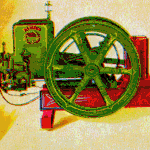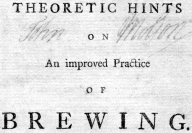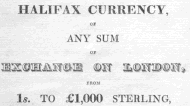




















|
|

In Canada, the first wine was made for commercial use in 1811 by Joseph Schiller on the banks of the Credit River. In 1857, Porter Adams was the first to plant vines in what is now the heart of the Niagara region. This manual is certainly one of the first on the topic.
J.M. De Courtenay
The Canada Vine Grower: How Every Farmer in Canada May Plant a Vineyard and Make His Own Wine.
Toronto: James Campbell & Son, 1866. 58 p.

Tobacco had been cultivated in Canada since the French Regime, but it is only during the period of this manual that it experienced an important commercial boom. Quebec was, at that time, the main producer of tobacco in the country. This was long before the appearance of the cigarette.
G. Laroque
Culture et préparation du tabac. Nouveau traité.
Lévis: Mercier & Cie., 1881. 52 p.

Some companies used lithography and chromolithography to produce attractive covers for their catalogues.
|

|
The Renfrew Machinery Company Ltd.
Séparateurs à crème standard.
Renfrew, Ont.: [Printed in Ottawa by Lowe-Martin, circa 1914].
|

The author was secretary to the Board of Fisheries in England. This work was reprinted in New Brunswick because it was deemed useful to local fishermen, even though most references were to the coast of Scotland.
Sir Thomas Dick Lauder
Directions for Taking and Curing Herrings: And for Curing Cod, Ling, Tusk, and Hake.
Saint John, N.B.: Henry Chubb & Co., 1850. 28 p.

An example of government regulations in Italian intended to be posted prominently to ensure that workers complied with safety regulations. It describes the meaning of sound signals and penalties for ignoring them. It was printed on linen to ensure durability.
Decreto per le miniere nell' Ontario...regolamento per le miniere sono stampati per informare le persone contemplate: disposizioni per la sicurezza dei minatori.
[Ontario, circa 1910].

When John Molson, Sr. (1763-1836) decided, a few years after his arrival in Montreal, to open a brewery, he could not find any technical books on the subject in Canada. It was during his trip to London in 1785-1786 that he bought this book, and brought it back to Montreal. This manual was, for many years, exhibited in the reception room of the Molson Brewery in Montreal.
|

|
John Richardson
Theoretic Hints on an Improved Practice of Brewing Malt-Liquors; Including Some Strictures on the Nature and Properties of Water, Malt, and Hops; the Doctrine of Fermentation; the Agency of Air; the Effects of Heat and Cold... The third edition, corrected.
London: Printed for G. Robinson, J. Wilkie [etc.], 1777. 74 p.
|

These ready reckoners were indispensable to merchants and shipbuilders throughout the 19th century. Later editions included other tables for rapid calculations of interest rates, wages, land measurements and currency.
John Charles Grant
Tables of the Cubical Contents of Masts, Hand-Masts, Spars, and Bowsprits...
Quebec: John Neilson, 1810.
A Ready Reckoner for the Use of Merchants and Measurers of Timber / Comptes faits pour l'usage des commercans [sic] en bois, des mesureurs, etc. New edition corrected and enlarged. / Nouvelle édition corrigée et augmentée.
[Quebec]: John Neilson, 1816. 66 p.
B.H. Day
Day's Ready Reckoner: Containing Tables for Rapid Calculations of Aggregate Values, Wages, Salary, Board, Interest Money; Timber, Plank, Board, Wood and Land Measurements...
London, Ont.: W. Bryce, 1880. 191 p.

Since the 1760s, both Halifax and New York currency had been used by merchants which resulted in much confusion since each gave the dollar a different rating. In 1821, Upper Canada made Halifax currency the only official one, as it had been in Lower Canada. With the appearance of banks in 1817, tables such as this one, converting sterling to Halifax currency became very useful.
Copy belonging to L. Foster and S.B. Harrison, both of Toronto.
|

|
Arthur Fessenden
Tables Shewing the Value in Halifax Currency of Any Sum of Exchange on London, from 1s. to £1,000 Sterling, ...
Montreal: printed for the author by Nahum Mower, 1822. 105 p.
|

G. LaRoche and N. Thibault
Table des profits pour l'usage du commerce 1921 / Profits Table for Commercial Use.
Québec: N. Thibault & G. LaRoche, 1921. ix, 109 p.
|
